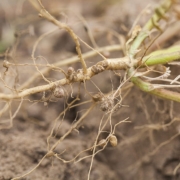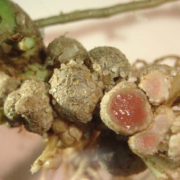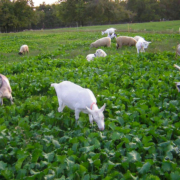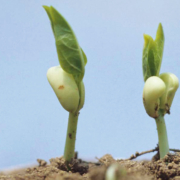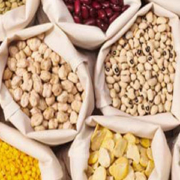3 Reasons Your Legume Cover Crop Nodulation May Have Failed
 Print This Post
Print This Post
By Emilie Ritter Saunders, NCAT Communications Director
Legumes make for great cover crops thanks to an important partnership between the plant roots and bacteria. When this biological partnership is thriving, nitrogen is being pumped back into the soil for future crops to benefit from.
It can sometimes appear like your cover crop is thriving above ground, but if bright pink nodules on the roots below ground aren’t visible around 30 days after germinating, there might be a problem.
As Stephanie Kasper, a biology research associate at University of Texas at Rio Grande Valley explains in Voices from the Field Episode 205: Inoculating Legume Cover Crops, there are three common reasons your legume cover crop may have failed.
- Rhizobia inoculant may have expired or overheated.
- Pre-inoculated seeds don’t always work well; inoculate your own.
- Wet seeds that have been inoculated might not work. Make sure your seeds are dry before planting.
Listen to Kasper’s full conversation with National Center for Appropriate Technology Sustainable Agriculture Specialist Colin Mitchell in Voices from the Field Episode 205: Inoculating Legume Cover Crops to learn how to troubleshoot and diagnose nodulation problems and avoid legume cover crop pitfalls.
Related Resources:
Cover Crop Options for Hot and Humid Areas
Blog 65. The Two Best Legume Cover Crops for Hot and Humid Climates
Blog 68. How to Make Sure Your Leguminous Cover Crop is Doing its Job
This blog is produced by the National Center for Appropriate Technology through the ATTRA Sustainable Agriculture program, under a cooperative agreement with USDA Rural Development. ATTRA.NCAT.ORG.

